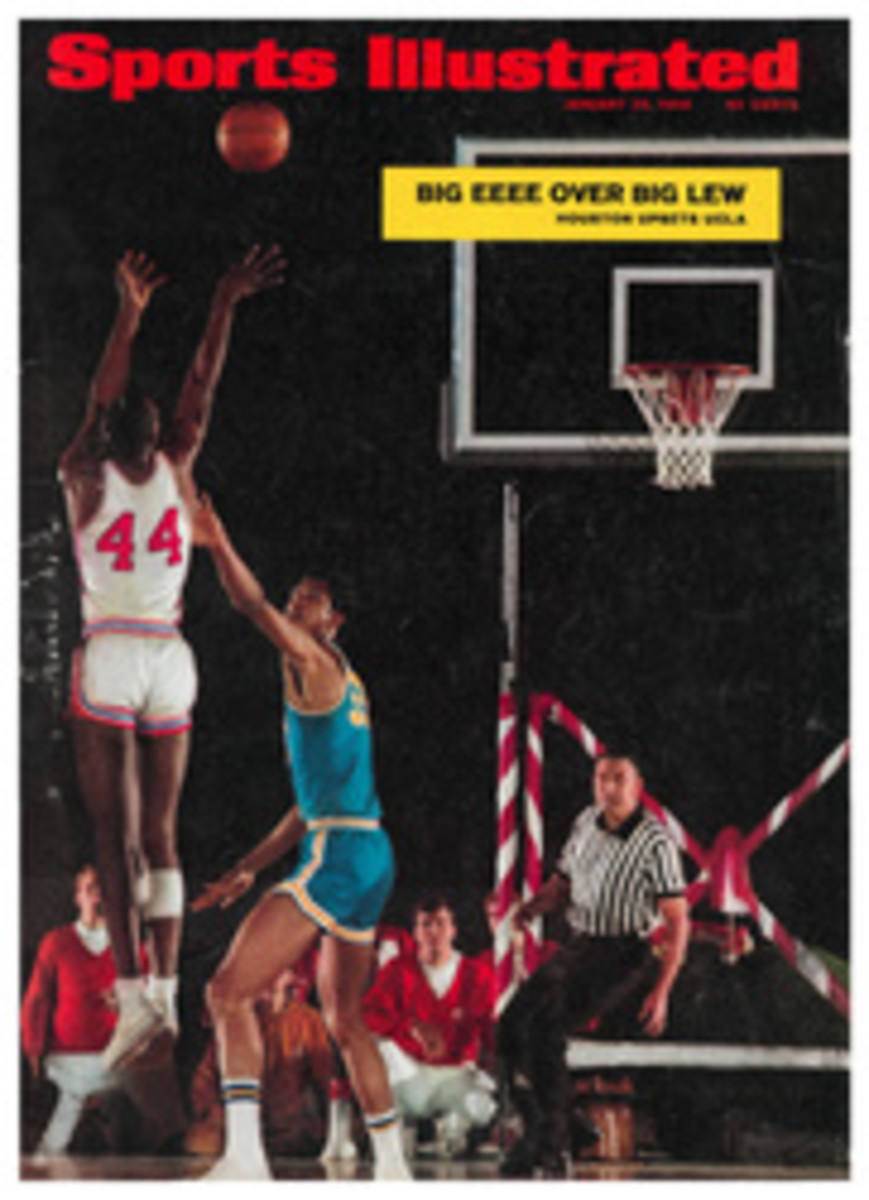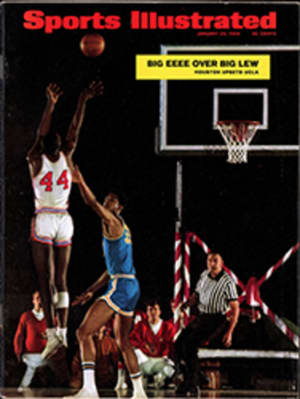
Young tigers in the pro jungle
Marty Fleckman (below) swings a golf club the way Byron Nelson taught him, hits a golf ball farther than Arnold Palmer and plays with equipment designed by Jack Nicklaus. So perhaps it should not be difficult to understand why Fleckman is rated a top prospect among a group of rookie professionals who this year have given the tour its best young look since Nicklaus himself came along in 1962 and won the U.S. Open.
Fleckman, of course, is the same fellow who last year, as an amateur, led the U.S. Open at Baltusrol after three days before collapsing with a final-round 80. "Sure, I still think about that Sunday afternoon," Fleckman said last week. "I had no real confidence, that's all. And when I started off poorly everything came apart. I know one thing; that wasn't the first 80 I ever shot in a tournament, and it won't be the last one either."
Fleckman, who is 23, is only one of seven young golfers and two somewhat older ones who comprise what Billy Casper claims is "easily the best crop of new players ever to hit the tour at once." The most experienced pro among the group is Britain's Tony Jacklin, 23, the son of a lorry driver in Scunthorpe, England. Jacklin has been a professional since 1962, but qualifies as a rookie since he has never been on the tour. A sound player, as he proved at the Masters last year when he finished in a tie for 16th, Tony decided the U.S. tour would be more rewarding than the European circuit and will concentrate his competition here this season. Another skilled foreigner is 19-year-old Bobby Cole, still at home in South Africa but expected to join the tour shortly. Cole, who weighs only 135 pounds and cannot swim—he reportedly almost drowned a few months ago while on a fishing trip in Australia with another of the year's interesting youngsters, Peter Townsend—won the 1966British Amateur and last year's monstrous eight-round rookie school tournament held by the PGA in Palm Beach Gardens, Fla.
Many of the rookies are graduates of amateur and collegiate programs in the U.S. Bob Murphy, 24, looks like Billy Casper before the buffalo diet, but he has won both the U.S. Amateur and NCAA championships. Rick Rhoads, 23, went to Southern California, where at 135 pounds he never was a threat to O. J. Simpson but managed to score pretty well just the same. Last fall he won the Caracas Open. Ron Cerrudo, 22, Jim Grant, 25, and Bob Smith, 25, never have won any major championships, but all have strong, sound games. Smith, in fact, is sponsored on the tour by Ed Lowery, the Monterey, Calif. automobile dealer who started Ken Venturi. The two somewhat older rookies are Deane Beman, 29, and Lee Elder, 28. Beman has won both the U.S. Amateur (twice) and the British Amateur. Not a long hitter, Deane is exceptionally accurate (he reached 100 of the first 108 greens in regulation at the rookie school in Florida) and has a remarkable short game. Elder is practically unknown. He playsout of the Langston Golf Course in Washington and now joins Charley Sifford and Pete Brown as the only Negro regulars on the tour. Last year Elder won 18 of 23 tournaments on the Negro United Golf Association tour, and in his first two events this year he won $2,300, including $1,300 at the Crosby, where he finished tied for 19th. "Lee has a complete game," says Casper, who played with him at the Southern California Open early in January.
Fleckman's golfing background is just as solid. He played at the University of Houston—which has its own alumni club on the tour—won the NCAA championship and was a member of the Walker Cup team last year. More than anything, however, it was his showing in the Open that convinced Fleckman that he could play the tour regularly. So in October he attended the PGA's rookie school and earned his ATP (Approved Tournament Player) degree, something that can be more rewarding than a Ph.D. Then he went to Lafayette, La. to play in the year's last tournament, the Cajun Classic.
Normally a rookie suffers the following misfortunes when he joins the tour: 1) He shoots 81-79 and misses the 36-hole cut in a tournament. He packs his clothes and clubs, maybe even his family, drives most of the night to the site of the next tournament and practices all Saturday and Sunday. 2) He tees off at 6:54 a.m. in the pretournament qualifying round on Monday and shoots a 77. Since 163 golfers are competing for 27 places, he does not quite make it and does not sleep well that night. 3) He spends six hours at the practice tee on Tuesday, then begins to worry about his confidence when another pro says to him kiddingly, "With that swing, no wonder you're having problems." 4) He thinks about his swing, decides he has to change his game and goes home, wherever that is, to practice for six months. He may never muster the nerve to try the tour again.
Fleckman, however, avoided all this with one burst of brilliance. At the Cajun, in his first official pro event, he birdied the 71st and 72nd holes of regulation play and the first hole of a playoff against Jack Montgomery to win the $5,000 first-place money. The cash was only incidental, however, because the victory also automatically exempted Fleckman from the weekly qualifying ritual for all events on this year's tour. "That exemption is worth about $25,000, a lot of sleep and no ulcers," says Rocky Thompson, a pro who has been on the tour for four years but still has not earned a qualifying pass for himself. "Marty doesn't have to worry about one bad round or one bad tournament because he can play again the next day or the next week. You don't really know what it feels like when you've got to go out on a Monday morning and shoot a 69 just to get into a tournament."
It was not without some soul-searching that Fleckman decided to make the jump from amateur to pro last fall. "I considered three factors," says Fleckman. "My game—was I good enough to go out and make a living playing on the tour? My capital—where was I going to get the finances to survive until I won some money? And my wife—because a wife can make or break you on the tour. Fortunately, Sandy—yes, she was my high school sweetheart back in Port Arthur, Texas—and I both are nonconformists and do what we want all the time. And she always dresses properly and things like that, so I don't have to sit around a clubhouse wondering what she looks like and where she is today. I couldn't play golf if I had that on my mind every day."
When Marty was at the University of Houston he could hit the ball as far as anyone, but it rarely came down in the fairway. Enter Byron Nelson, a master of disciplined golf. "Dave Williams, our coach at school, wrote to Mr. Nelson," says Fleckman. "Dave told him that I wanted to be a great player. The next week I went to a pro-am in Odessa and introduced myself to Mr. Nelson, and he watched me play a few holes. Then he had to leave, and I didn't see him the rest of the day. I was leaving immediately for a tournament in the Midwest, so I called him and asked if he could give me anything to work on." That was in 1965. Since that time Nelson has counseled Fleckman countless times, and only two weeks ago, at the Crosby, Marty spent more than an hour swinging a club in Byron's suite as the old shotmaker tried to stop him from sliding through the ball too soon before impact and consequently hitting everything well to the right. Some touring pros think thatFleckman's swing is too stationary, that he does not move his body through the ball well enough, and that he flips the club during his downswing. However, as Casper says, "No one has a perfect swing. Everyone should have a swing of his own. And Fleckman's swing is fine for what he does."
Despite the stories that appeared during last year's U.S. Open, the Fleckmans are not millionaire Texans who bathe in oil. They are in the lumber business, and neither Marty's father nor any relatives are sponsoring him on the tour. "There's only one way to come out here," he says, "and that's with your own money. So I borrowed $6,500 from a bank and bought a new car right away. I had only $500 left, with another loan application ready to be filled out, when Babe Hiskey and I each won $1,140 at the Haig & Haig four-ball last November. Since then I guess I've been pretty lucky."
It costs Fleckman and his wife between $350 and $400 a week to make the tour, but he manages to save a few dimes by filling his pockets with sugar packets from clubhouse grillrooms. Since turning pro, Marty has earned almost $8,000 in prize money. He also signed with MacGregor for a cash bonus and now uses their "VIP" Nicklaus clubs, with two slight modifications in the forging. He has not yet become affiliated with any clothing manufacturer, but he has acquired an agent to handle such matters, should they arise.
Life on the tour has been pretty much what Fleckman expected it to be. "You make your own friends, go your own way and do what you want," he says. "Everyone has been pretty good. When I turned pro I remember that Jack Nicklaus made a special trip to the tee to wish me good luck, and that's something I didn't expect anyone to do. No one out here plays up to anyone else, that's for sure. Why should they? At the Open last year some writers said that Palmer snubbed me. He didn't. He said 'Hi' to me when he saw me. What do people expect? All I expected was 'Hi.' I'm certainly not going to go around and play up to any other pro. And I don't expect anyone to play up to me."
PHOTO

